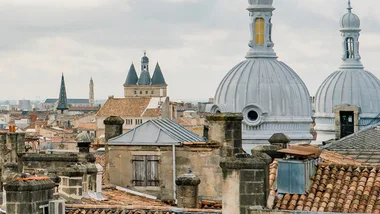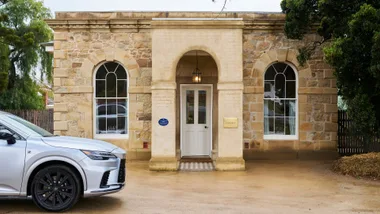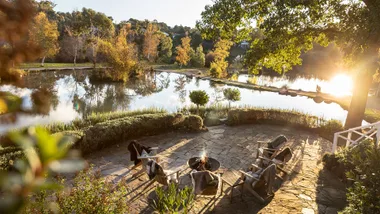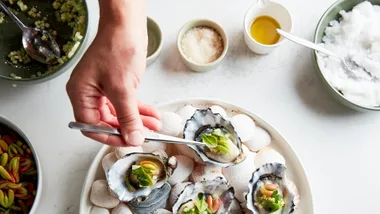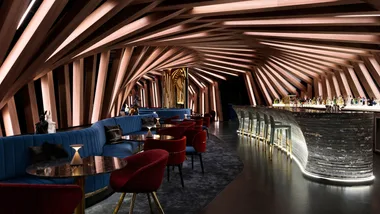In 2021, when my world became small, I craved bigness. In cinematic terms, I fantasised about a blockbuster of a European city break, with dazzling special effects, a big-budget set, a melodramatic script and an improbably glamorous cast. On what felt like the 7000th dreary, identikit day in a row, I promised myself that my first post-lockdown international trip would be Rome.
Rome, to my intense embarrassment as a travel writer, is the one big European city I have never visited, and I had two long years to ponder this bad decision. Sure, Rome is not cheap, with none of the legendary gastronomic bang-for-buck as Naples, for example. Rome is not cool; in fact, Rome was at its coolest 2000 years ago, so a weekend in Rome doesn’t have the hipster kudos of Helsinki or Tel Aviv. Rome is not particularly international, something the sizeable international community is blissfully united in whining about. The United Nations World Food Programme and other UN bodies are headquartered here, yet Rome has historically not been particularly interested in other cultures or cuisines. If you’re Rome, why would you be?

The Hoxton, Rome
Anyway, none of these desultory details matter, because Rome is the ultimate big-hitter of European city breaks, the obvious choice for travellers who have been longing to live large. I wanted to feast upon architecture and carbohydrates, and drink in antiquity and Barbaresco. Wander around the ivy-strewn piazzas of Regola, where double-Michelin-starred restaurants like Il Pagliaccio sit an arancini’s throw away from elevated street-food joints like Supplizio. Then marvel at the classical grandeur of the Spanish Steps, marvel at the ancient ruins of the Roman forum, and marvel at the tourists taking selfies at the (admittedly ravishing) Trevi Fountain. Rome is the city for travellers to go big.
My Roman friends told me that eating well in Rome requires two things: 1. Don’t take rude waiters personally; they simply don’t see “pretending to like you” as part of the job, they’re too busy serving you exceptional food. 2. Do what you’re told. You will be issued strict instructions about where to eat, drink and sleep by Romans, and it’s best if you just obey these pleasure-seeking big-hitters.
Rome starts every morning as it means to go on, with decadence. All the Italian cities have their own signature breakfast pastry, and in Rome we have the maritozzo, romantically named after marito (husband), an oval brioche bun oozing with fresh cream. I wake up in The Hoxton Rome hotel in the old aristocratic Lazio district, and in the lobby bakery, Cugino (a partnership with much-loved local bakery Marigold) the staff insist that I try a maritozzo and doppio (double espresso), before packing me off for a gentle stroll in the beautifully landscaped Villa Borghese gardens a few minutes away.

Rome is a famously walkable capital, but there is a better way to get around: Vespa. Michele Bartolini is a longstanding Scooteroma tour guide, and he revs up to The Hoxton on a vintage Vespa brandishing a spare helmet. I successfully charm him by referring to the original 1977 Suspiria, Roman director Dario Argento’s recently ripped-off supernatural horror. After that, Bartolini gets extra chatty, telling me films I need to watch, restaurants I need to dine at, and things I need to know about Rome.
“Ancient Rome is basically a cross between two modern cities: Dubai and Las Vegas, he tells me, as we speed off down Via Pinciana, past the Villa Medici, yet another imperial mansion that is now an art institution.
“Rome was built for showing off, and for pleasure.” We weave in and out of the traffic, as if the architecture wasn’t thrilling enough. “Don’t worry, in Rome, anyone on a Vespa is treated like an emperor in the traffic pecking order,” says Bartolini. “We’re untouchable, superior to cars and bicycles and pedestrians.”
Bartolini veers off the main roads and on to Via Appia Antica, paved in 312 BC, before we whizz around the Colosseum, which – and this is becoming a theme – is bigger and more majestic than I expected. No iconic sight in Rome is underwhelming (I’m looking at you, Mona Lisa…), and I came here precisely to be overwhelmed.
“The Colosseum had seats for 50,000 spectators, and latrines, and water fountains,” shouts Bartolini. “Oh, and it had a retractable roof.” Indeed, this massive stone amphitheatre, commissioned around AD 70-72 by Emperor Vespasian as “a gift to the Roman people,” had a series of manually hoisted awnings that Stadium Australia can but dream of. What the ancient Romans lacked in industrial technology, they made up for with slaves.
The result of 3000 years of emperors and architects and popes and engineers furiously trying to outdo each other, Rome’s cityscape is breathtaking to ride through. Immediately recognisable landmarks like the Colosseum, Roman Forum and Pantheon testify to the city’s golden age as “caput mundi” (capital of the world), with a population of more than a million inhabitants in the 1st century CE. No other city in Western Eurasia reached this population again before the 19th century.

Soho House Rome
(Photo: Giulia Venanzi)But Rome’s bigness was never really about size. Rome is about big ideas.
Across the Tiber River, St Peter’s Basilica looms above the Vatican, a testament as much to the ambition and arrogance of Rome’s Renaissance popes as to the genius of Rome’s architects. Equally impressive is the terracotta maze of Testaccio, a working-class neighbourhood that is now home to the city’s most innovative restaurants and food vendors. Bartolini explains that Testaccio was built around the Mattatoio, Europe’s largest and most technologically advanced abattoirs, credited with giving Roman cooking its nose-to-tail ethos. Cucina Romana is about extracting maximum pleasure from whatever you have, and dishes like braised oxtail work culinary magic with cheaper cuts.
Today the old abattoir is the Museum of Contemporary Art of Rome (MACRO) and the buildings are still connected with the tracks and hooks that transported carcasses from one building to another. At the Nuovo Mercato di Testaccio, a glass-roofed food market, shelters hundreds of top-drawer food vendors, Bartolini orders for me at Casa Manco, which many Romans swear is the best pizza-by-the-slice joint in Roma. This family-run pizzeria is famed for its 100-hours-leavened dough.
It was the poet Tibullus who first referred to Rome as the “Eternal City” in the 1st century BC, a bold bet at that early stage in the eternity game, but so far, so good. And in a delightful paradox, Rome combines the supreme confidence of assumed immortality with a thrillingly fatalistic attitude to everyday living, which is a strangely intoxicating combination for travellers.
“Do every act of your life as if it were your last,” wrote the Stoic philosopher and Roman emperor Marcus Aurelius in his circa AD 161 philosophical tract Meditations.
Today, this sentiment has been distilled into Rome’s big commitment to pleasure-seeking; highbrow hedonism and sophisticated sybaritism are pursued with stoic determination, as if every pizza, kiss, sunset stroll or Peroni could indeed be one’s last. La dolce vita is Rome’s religion. The good life is Rome’s biggest big idea. And I’m a believer.
Rome accommodation
Housed in what was once Rome’s school of architecture, JK Place Roma offers an updated five-star alternative to the equally ravishing Hotel de Russie, Rome’s indomitable grande dame hotel. Italian mid-century furniture, gemstone hues and stately four-poster beds meld beautifully in this genuinely memorable boutique hotel in the centro storico.
Soho House Group has gambled on the up-and-coming San Lorenzo district, and built a 10-storey private members’ club with a 49-room boutique hotel attached. It’s unquestionably a youthful hotspot with unrivalled bragging rights among locals.
The tenth hotel by this hip British chain is a relaxed yet refined delight, with a light-filled Californian-Italian restaurant, Beverly, which has deservedly been a huge hit with food-obsessed Romans craving a break from pasta.
Three restaurants to try in Rome
Rimessa Roscioli
The Roscioli family established a bakery in Rome in the 1800s, and their casual Salumeria (visited by the late, great Anthony Bourdain) and the tasting menu at the restaurant and wine bar are equally raved about by locals.
Trattoria da Danilo
As traditional as trattorias come, with spectacular pasta and surly service to match. The carbonara (made the Roman way, with egg yolks instead of cream) and cacio e pepe are the classic dishes on the menu.
Zia
An elevated Italian tasting menu is served with fanfare in this much-loved Trastevere restaurant run by a husband-and-wife team. Dishes include mutton tartare, hare served with beetroot and juniper and black cardamom rice pudding.
 Getty images
Getty images
